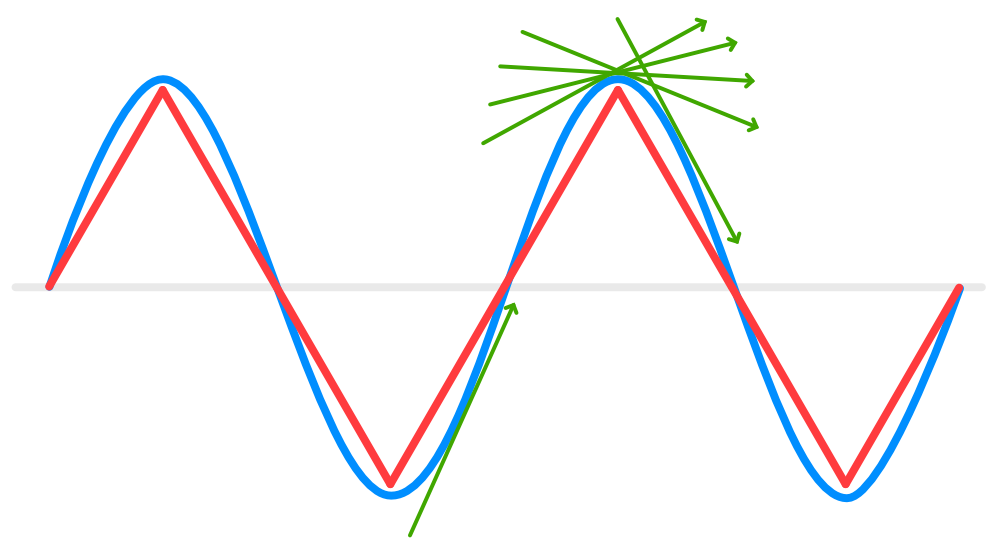
Rarely do events in nature have a very dramatic flip from one state to another.
Most people probably think in Sawtooth motion, when in reality it is usually more of a Sine wave. This has implications not only for the moment when it transitions between two states, but also the mid-point between them.
Let’s take for instance the equinoxes and solstices. These are significant days when dealing with the sine wave. At the peaks and troughs, (solstices) these are the shortest and longest days. These are the transition points between each day getting shorter versus getting longer. Up to this point was NOT a constant loss of an equal number of seconds each day. The day before or after a solstice is just 6-10 seconds longer or shorter, and the day before that maybe 7-15 seconds. As we approach the solstice, we ease in or out of the length of the day.
Had this been a Sawtooth motion, every day losses and equal amount of time until the solstice where it would magically flip and reverse direction gaining or losing an equal about of daylight each day.
The other important thing to remember about a Sine wave is that during the mid-point, the equinoxes, you are half-way between the two state changes. This is when the velocity is at its maximum and the acceleration flips. If during a solstice, you gain or lose seconds each day, at the equinox it is minutes. This is the steepest part of the curve so there is the most rate of change. This never happens in a Sawtooth motion since the velocity is constant.
Think in Sine waves, not Sawtooths.
Getting started is hard, changing can take time, but once things get moving they can accelerate fast.